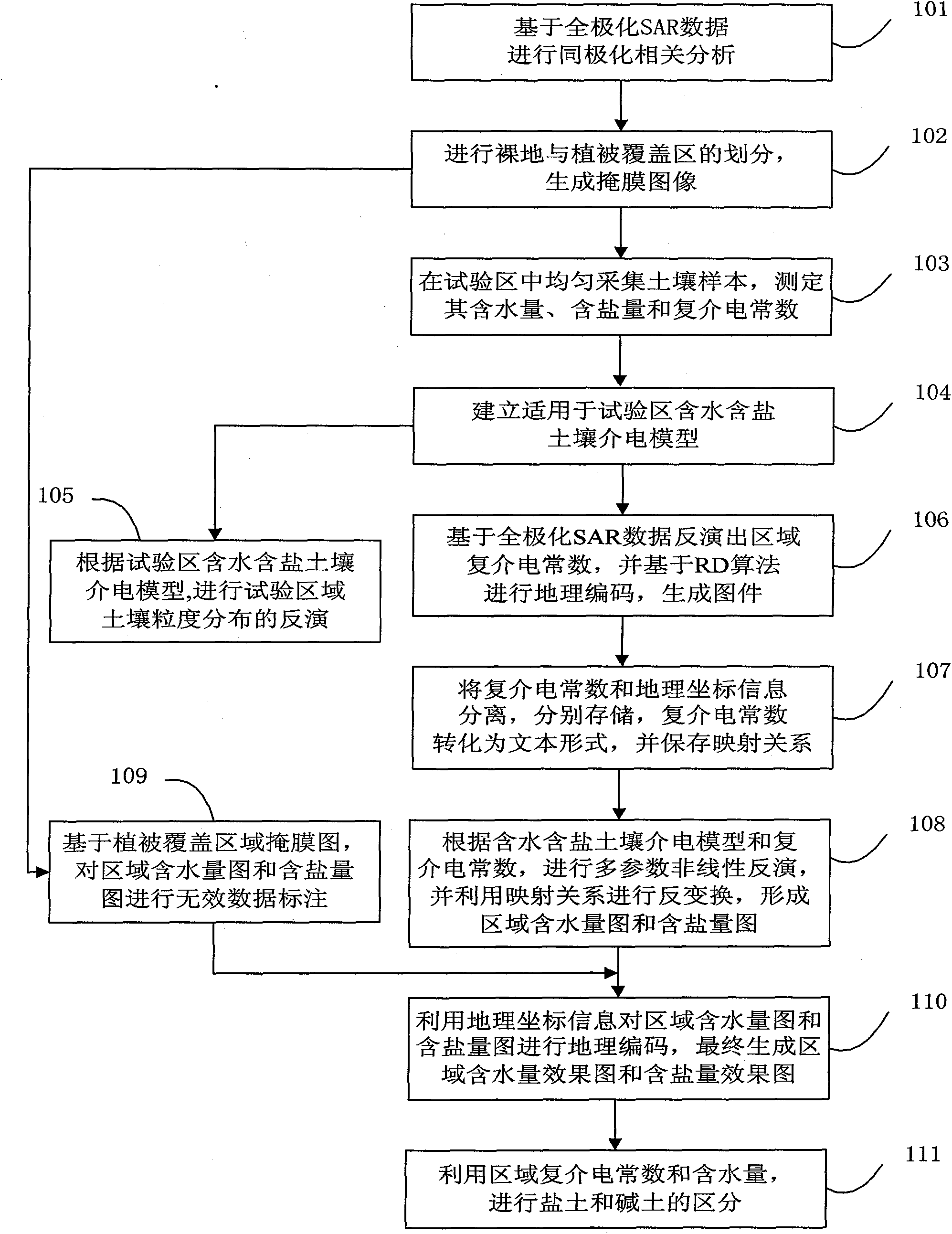Radar remote sensing-based detection method of soil alkalization
A technology for remote sensing monitoring and salinization, which is applied in the field of radar remote sensing monitoring of soil salinization, and can solve problems such as difficulty in large-scale promotion, prolonged monitoring period, and inability to express dielectric characteristics.
- Summary
- Abstract
- Description
- Claims
- Application Information
AI Technical Summary
Problems solved by technology
Method used
Image
Examples
Embodiment Construction
[0062] The technical solutions of the present invention will be further described below in conjunction with the accompanying drawings and through specific implementation methods.
[0063] The main idea of the technical solution of the present invention is to firstly carry out the co-polarization correlation analysis and the calculation of the polarization degree based on the full polarization SAR data, and carry out the division of the bare land (including the low vegetation coverage area) and the vegetation coverage area according to the polarization parameters, Generate a mask image; secondly, delineate the test area according to the mask image of bare land (including low vegetation coverage area), and use the measurement data of several sample points to establish the dielectric model of water-containing and saline soil; and then use SAR full polarization data to invert The complex permittivity map of the test area and the corresponding distance-Doppler (Range-Doppler, RD) ...
PUM
 Login to View More
Login to View More Abstract
Description
Claims
Application Information
 Login to View More
Login to View More - R&D
- Intellectual Property
- Life Sciences
- Materials
- Tech Scout
- Unparalleled Data Quality
- Higher Quality Content
- 60% Fewer Hallucinations
Browse by: Latest US Patents, China's latest patents, Technical Efficacy Thesaurus, Application Domain, Technology Topic, Popular Technical Reports.
© 2025 PatSnap. All rights reserved.Legal|Privacy policy|Modern Slavery Act Transparency Statement|Sitemap|About US| Contact US: help@patsnap.com



